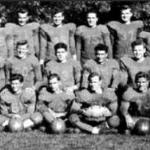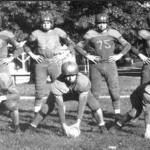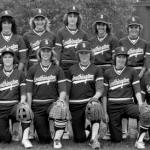Decades of excellence and a winning tradition
Welcome to Southington's Sports Hall of Fame 2011 Inductees

While passing through the gates of Southington Sports some Athletes have left an indellable mark. This page is dedicated to them and the supporters who helped them along the road to Southington Sports Inmortality. Thanks to John Goralski for all his help.
Copyright Southington Sports 2011-2025


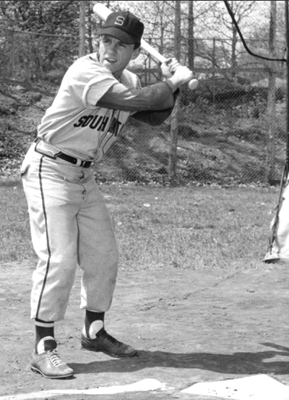
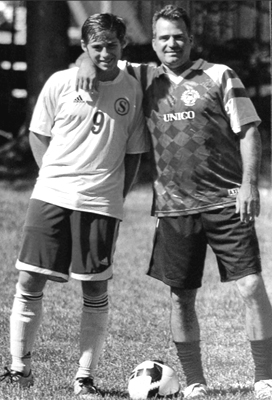
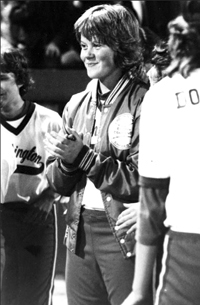
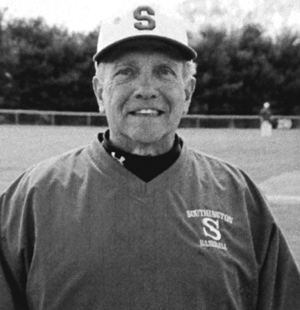



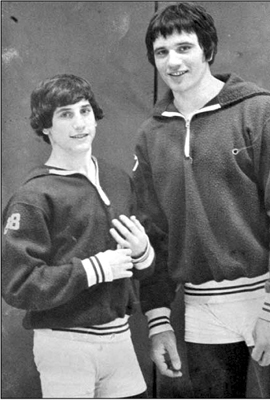
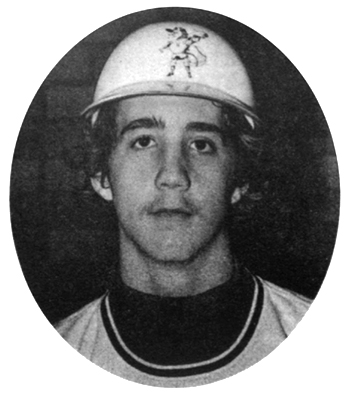
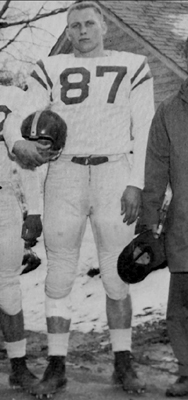
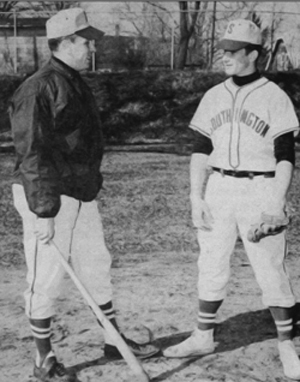
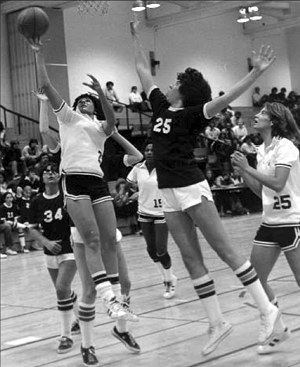
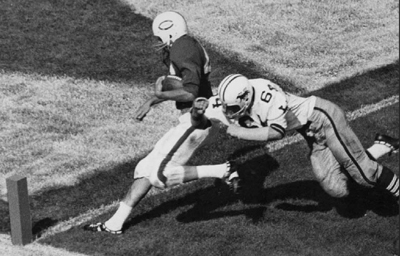
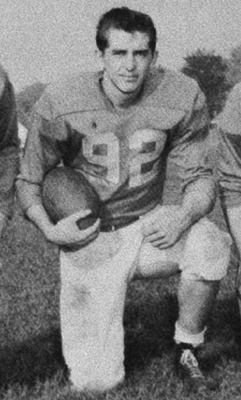
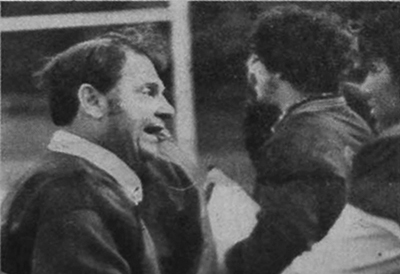
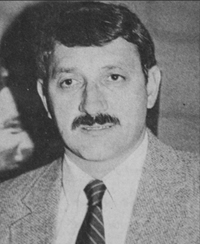
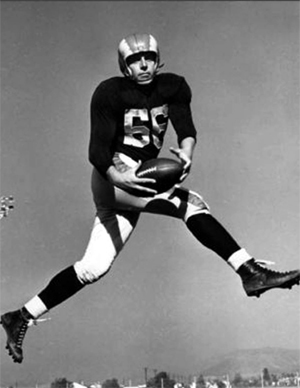
Coach Walt Lozoski
When Walt Lozoski coached in the local school system, Southington was a small town that packed a big punch. They would stand toe-to-toe against the big towns and small cities, and Lozoski's teams would hold their own.
Former Southington High School coach John Fontana was a basketball player on one of Lozoski's teams, and he remembers the late coach for his commitment to fundamentals, running practices with the nets rolled up.
“We played defense. We did fundamentals. We dribbled left handed, right handed. We went home exhausted and dropping,” said Fontana. “Everyone was wondering when those hoops were coming down. I’ll never forget that.”
The hard work paid off. Lozoski's basketball teams went 249-162 over his 21-year career. His football teams went 24-8 in four seasons. He established the high school golf program, and his fledgling squad went 38-12 in five years. As a coach Lozoski won 12 league titles, 2 state championships, and was named CT Golf High School Coach of the Year in 1964.
Coach Dom D'Angelo
Dom D'Angelo stepped to the sidelines in 1967 at a time when Southington was about to grow by leaps and bounds, and nobody could have been better suited for that task. For 21 years, D'Angelo coached the Blue Knights as the small town's population exploded, two-parent incomes became the norm, and students were struggling with the demands of a changing world. D'Angelo helped smooth that transition.
His teams were known for their code as Blue Knights. “You had to be a gentleman. You had to play your heart out. You played with respect. You honored your fellow coaches. You honored your opponents,” D'Angelo said. “It was a beautiful relationship, and I don’t know if that’s around any more. If not, that’s so sad.”
On the field, D'Angelo's teams rallied for 113 wins, 86 losses, and 11 ties. He collected four conference titles and a pair of undefeated regular seasons. Off the field, he began to build the infrastructure. D'Angelo is credited with establishing the Gridiron Club and went on to serve as the town's athletic director until his retirement in 1987.
Carl Pavano
Carl Pavano is the only one on the list who isn't finished with his statistics. That's because, after 12 seasons in the major leagues, Pavano is still going strong. He needs just three more victories to earn his 100th win, and has already collected seven shutouts and 14 complete games. He's struck out 956 batters with 377 walks. Pavano's ERA stands at 4.34 after more than 1,500 innings on the mound.
Of course, Pavano has little more to prove. In 2003, he helped guide the Florida Marlins past the Yankees for a World Series title. In 2004, Pavano was a National League All Star with an 18-8 record and a 3.00 ERA.
Southington fans weren't surprised. As a Blue Knight, he went 20-3 on the mound with 283 strikeouts, two no-hitters, and a 0.61 ERA in his senior season. He set a school record with 13 complete games and 186 strikeouts in 1994—the year he led Southington to a Class LL championship. Pavano was an all-state pitcher in 1993 and 1994, and a preseason all-American in 1994.
“He had pin-point accuracy, better than any pitcher in high school that I've ever seen,” said former Southington High School coach John Fontana. “He loved the stage of the big game.”
At the plate, he was just as deadly with a .429 batting average, 27 RBI, and four doubles.
Dick Lorenzo
Good things do come in small packages, and Richard “Dick” Lorenzo is the perfect example. The 5-foot-8 Lorenzo dominated the Southington sports landscape. He scored almost 1,000 points as an all-state basketball player. He hit .460 as a senior starter for the baseball team in 1957. He went on to play baseball at Fairfield University and hit over .300 in three consecutive seasons. In slow pitch softball, he went on to capture seven state titles and seven New England titles. There was nothing 'small' about his spirit, and he was never far from the game.
“It was a 12 month thing for me,” he said. “We used to shovel off basketball courts around town or in our own driveways. We’d make sure that we could play, and we’d shoot for hours upon hours. I don’t want to sound corny, but sport has always been an awfully big part of my life.”
In fact, when his playing days came to a close, Lorenzo continued to compete. Over a 16-year career he earned a 216-138 record as a basketball coach. He led small teams at St. Thomas Seminary and bigger teams at Simsbury High School. He coached college athletes at Mattatuck Community College and Wesleyan University and finished his coaching career at Southington High School from 1984-1991.
Gil Varjas
Gil Varjas has never strayed far from sports, and he has a career that spans more than 50 years as a player and a coach. Since he stepped into the spotlight in 1958, there has been just one year that Varjas wasn't in uniform.
At Southington High School, Varjas never missed a season. In the fall, he helped anchor a football team that went 18-8-1 over his three year career. He finished with eight touchdowns and 10 extra point conversions. In the winter, he played 68 varsity basketball games, scored 513 points, and averaged 11.3 points as a senior. In the spring, he led the team on both sides of the plate, collecting a 14-2 record as a pitcher with 144 strikeouts in 133 innings. As a batter, Varjas collected 60 RBI and hit .333 as a senior in 1961 to help Southington win a Class LL championship.
His coaching record is just as impressive. Varjas went 430-195 at New London High School from 1967-1999. He won four state titles in eight championship games and collected 12 conference titles. In 2000, he was named as the National High School baseball coach of the year.
“I just want to be remembered for working hard,” he said. “That really was a big thing for me. I put a lot of effort into working hard. I played for good teams and coached for good teams.”
Jack Zilly
Jack Zilly was the first Southington athlete to reach the professional ranks and the first to win a world championship. He was the first to win an NCAA championship, and the first to speak in a movie. Jack Zilly was a star, on and off the field.
Zilly was a star at Notre Dame where he played tight end for a pair of NCAA championships in 1943 and 1946 that were separated by his service in the South Pacific during World War II. He was drafted in the fourth round of the NFL draft and won the NFL championship game as a member of the Los Angeles Rams in 1951. His good looks and California locale earned him parts in Hollywood during the off-season where Zilly earned small parts in a number of movies, including an uncredited speaking role in the movie “Twelve O'Clock High.”
When his playing career ended, Zilly returned to the college ranks where he served as an assistant coach at Montana State and Notre Dame.
“If you were sitting in a crowd and talking about football, he wouldn't tell anybody that he played for the Rams or the Eagles,” said his son Pat Zilly. “He wouldn't give a background on himself because he wasn't that type of person. When people in the town of Narragansett read his obituary in the paper, they were shocked to find out what he had done.”
John Crowley
When John Crowley stepped on the soccer field, it was assumed that he would score. Rarely, did he let Southington fans down. He played at a time when Southington High School was a three-year program, but his records are still out of reach of all but a handful of four-year players.
“His willpower, desire, and concentration were just outstanding. He wasn’t the fanciest player in the world or the most skilled, but his desire to score was unbelievable,” said former Southington High School soccer coach Dan Murawski. “He had that desire for that ball to go into the net. He wouldn’t be stymied, and he knew he was going to win.”
Crowley still holds the school record for single-season scoring with 26 goals in 1983. He scored 46 career goals, a record that has only been broken once by a four-year player. He was an all-conference player twice, an all-state and all-New England player as a senior, and was selected as an all-American by the National Soccer Coaches Association of America in 1983. Crowley set the bar for Southington soccer.
Julie Bolduc
The Lady Knight softball team was already established as a state powerhouse when Julie Bolduc stepped in the circle for her first varsity season, but Southington was about to be catapulted into the national spotlight. Bolduc might have had control issues as a youth pitcher, but she was nearly perfect as a varsity ace.
Bolduc made her name as a junior, striking out 158 batters in 174 innings. Southington went 22-1 on their way to a state title, but her senior season raised the bar. In 1983, Bolduc pitched the Knights into the national record books with a national record for lowest ERA in a season (0.043) that stood for more than 20 years. Bolduc pitched to all but one inning that season, and that season's Knights are still ranked among the best. They’re ranked second for fewest runs allowed (4), fewest earned runs (1), and lowest ERA (0.04). Bolduc is ranked fifth in the nation for consecutive innings without an earned run (129.7).
“The work and time that this team put in was unbelievable,” she said. “We made a lot of sacrifices. We practiced, and it paid off. But I don’t think that anybody cared. It was just fun.”
Michael Lantiere
If you're looking for Michael Lantiere, you might want to start your search at the nearest baseball field. More than likely, that's where he'll be. Since the mid-80s, Lantiere has been at the center of Southington baseball.
He served as a coach and president in the Southington Western Little League. Since 1988, he's been an unpaid assistant for the Southington High School baseball team. He's served as financial officer for the high school softball and baseball teams, and he's been at the center of most major developments. When it came to lighting the baseball field, Lantiere coordinated the project. When it came to the sprinkler system, he stepped up again. Lantiere gave his time, his sweat, and even his money to both projects.
“Most people would do a little here or there,” said former Southington High School baseball coach John Fontana, “but I don't think there's anybody who's done as much and for as long a period of time as he's done.”
That's not all. Lantiere is currently the Umpire-in-Chief of the Little League's Eastern Region. He has umpired at the local level, the state level, and at the international level in the Little League World Series.
Mike Mauro
Mike 'Mousy' Mauro was a sophomore when he earned the final hit at Lewis High School, but that was just the beginning. Over the next two years, Mauro would launch the Southington High School program into a new era of success.
As a pitcher he was nearly untouchable, collecting 20-3 record on the varsity mound. He went 6-1 as a sophomore and 7-1 in each year that followed. As a senior Mauro struck out 87 batters in 67 innings with three shutouts, a no-hitter, and an ERA of 1.35, but it was at the plate that Mauro left his mark. In 1953, Mauro led the team with seven doubles, six triples, one home run, and 24 RBI. His mind-numbing .567 average in 1953 still stands as the best in school history and earned him entrance into the town's baseball hall of fame.
But Mauro was a true athlete. He averaged 13.4 points per game as a basketball player, leading his team to a 17-3 record as a junior and a 19-0 record as a senior. He scored 23 points in the 1953 quarterfinals to left Southington to their second straight semifinal appearance. As an adult, he captured the United Nations bocce title in 1983.
“Mike was a natural athlete, and he’s regarded as one of the best baseball hitters in town history,” said former sports writer Art Secondo. “If he picked up any kind of round ball—whether it was baseball, bocce, bowling—he was just good at it.”
Ray Michanczyk
Ray Michanczyk had it all—power, size, and speed. He was a key blocker in 1949 when Lewis High School captured the Class B state title. He was an all-state tight end in the years that followed, and he was Southington's first high school all-American when he made the list in 1951.
“They used to have to kick me out of the YMCA because I just loved sports,” he said. “There weren’t many fields, so you’d go behind churches and play. We’d play in a ditch 20 yards long just to run the ball. If you didn’t have a ball, you’d just take a potato sack and roll it up. It was a lot of fun.”
Michanczyk dominated every season. He scored 109 points in football, 1,015 points in basketball, and hit over .398 for his career in high school baseball. Then the scouts appeared.
He was invited to tryout with the Brooklyn Dodgers, but elected college instead. He won the Eastern States basketball championship at Staunton Academy and the military football championship before transferring to Olympic Junior College and Washington University. After college Michanczyk signed a letter of intent with the Green Bay Packers, but an injury ended his career.
Rob Dibble
Rob Dibble broke into the major leagues like a hurricane, blowing through lineups with his 100 mph fastballs and 2.98 ERA. He struck out 500 batters in 368 games—faster than any other pitcher in the modern era. He was a two-time all-star for the National League, a National League Championship Series MVP, and a member of the 1990 Cincinnati Reds World Series championship team.
“The championship moments are fleeting, but to have six or seven months together to accomplish something is the stuff you can’t take away,” he said. “That’s the beauty about winning a championship.”
For locals, it came as no surprise. Dibble had been dominating batters since his early days at the Western Little League. He was also a dominant soccer player in the fall, but it was baseball that turned heads. He went 14-3 in two seasons, striking out 168 batters in 154.6 innings. He was a two-time all-conference player and an all-state pitcher in 1982, but Dibble was just as nasty at the plate. He went .333 as a junior and .376 as a senior, collecting five triples in 1981 and seven for his career—both school records.
After retirement in 1988, Dibble turned to broadcasting. He's served as a co-host and analyst for ESPN and FoxSports. He was the voice of the Washington Nationals and currently hosts 'Fast Pitch' on XM and Sirius radio.
Steve Fernandes
It didn't take long for wrestling to leave its mark on Southington sports, and that's largely because of Steve Fernandes. He had a street fighter's toughness, the balance of an acrobat, and the strength of a giant wrapped up in a 100-pound package. In wrestling, that's a recipe for success.
“He was strong. He was fast, and he was dedicated,” said former Southington High School wrestling coach Bob Wittneben. “If you take those combinations, I don’t care if you’re 6-foot-4 and 250 pounds or 5-foot-4 and 100 pounds, you’ll be good.”
Fernandes helped raise the bar for the fledgling Southington program. He went 14-1 as a sophomore with a third place finish at the Class LL meet. He went 17-0 as a junior, winning the Class LL title and finishing second at the state open. As a senior co-captain, he went 15-1-1 and earned second place at both state meets. Southington won its first state title, but Fernandes was just getting started.
In college, he captured the 1982 NCAA division III title in the 134-pound division. Three times, he earned all-American honors. His overall record in high school and college was 228-14-1.
Tom Banner
Tom Banner made it look easy when he stepped out on the field. He was a smooth hitter, a golden-glove fielder, and a leader on the field. He was all-conference three years in a row and all-American after his junior year. When he stepped in the batter's box, you could expect him to get a hit.
Banner still holds seven Southington records with most at bats in a season (100), most at bats in a career (276), most career hits (109), longest single-season hitting streak (20 games), longest career hitting streak (28), fewest strikeouts in a season (2), and fewest strikeouts in his career (5).
“He was just a natural hitter, and he’s always been a great hitter,” said Jim Gugliotti, a former teammate and Southington’s current American Legion baseball coach. “Even when he was nine years old in Little League, he was a great hitter. He hardly ever struck out. He seemed to always get hits, and he always got the bat on the ball.”
Banner hit over .300 in every season and over .400 in two years at the high school. After graduation, Banner traveled to the Philippines and earned the MVP award with a .600 average. He played for the University of New Haven, and was drafted by the Baltimore Orioles in 1978.
Tom Cichowski
Tom Cichowski was a starting lineman for three seasons before convincing coaches to give him a chance as a ball-carrier. That was the spark that lit his career. Cichowski ran over defenses for 10 touchdowns, six extra points, and a scholarship to the University of Maryland. Then, he convinced his college coaches to give him a chance as an offensive lineman.
Cichowski never shrank from a challenge. In basketball he earned three varsity letters and averaged 18-22 rebounds each game as a senior in 1962. Despite his size, he was able to fill in at the perimeter when injuries demanded it. In track he placed at the state and New England levels in both the shot put and discus.
“I was an athlete,” he said. “I used to like to run. I liked to jump. It didn’t really matter what I was doing, but that I was doing.”
That versatility earned him the Jim Tatum lineman award in 1966, and he was quickly drafted Green Bay Packers and Oakland Raiders. He was cleared on waivers, but was snatched up by the Denver Broncos where he played for two seasons before suffering a career-ending injury.
Tom Garry
Nothing seemed to rattle Tom Garry when he stepped to the mound. From the way he tucked the baseball into his giant paws to his cool shuffle back and forth to the mound, Garry never seemed to get rattled. Batters, on the other hand, never stood a chance.
“He’d throw the fast ball. He had a curve too, but he could just hit spots,” said former Southington High School baseball coach John Fontana. “Nobody clocked him at the time, but I’ll tell you. I coached Rob Dibble. I had Carl Pavano, and guys like that. I don’t know if any of those guys were any faster than him. When he brought it, he brought it.”
Garry was a member of Southington's 1961 state championship team, but he set five single-season pitching records the following year. He tops the record books with single-season no hitters (3), complete games (11), innings pitched (143), strikeouts (156), and fewest earned runs (5). For his career, Garry holds the school record with 25 victories. His career ERA (0.31) was a national record in 1962, and still ranks fifth all-time amongst American high school pitchers.
Garry struck out 16 batters in his first start at American International College, but left the school early and never returned. Garry passed away suddenly in Texas with his family in 1992.
Valerie DePaolo
There were very few opportunities for female athletes when Val DePaolo was growing up, but that never stopped her. She would play against the boys, and usually she would win. It wasn't until junior high that she was finally able to compete in organized games, and at the high school she was ready to blaze the path for future generations.
“I was just thrilled that there were sports,” she said. “I remember when I went to the high school that someone told me there were even sports in the fall. I didn’t know what field hockey was, so I picked volleyball.”
DePaolo was a three-sport athlete in volleyball, basketball, and tennis, and she was captain of all three by her senior year. She was all-conference every season. She was first-team all-state in basketball as a junior and a senior. DePaolo collected 1,074 rebounds and her scoring record (1,333 points) still stands as the best at the school even though high school athletes played just three years at the time.
DePaolo was named as a Prep All-American & Converse All-American in 1979. She earned a full basketball scholarship to the University of Massachusetts. She was inducted into the Connecticut Women’s Basketball Hall of Fame in 1993 and the New England Basketball Hall of Fame in 2009.
Vinny Clements
Vinny Clements was a star at Southington High School. As a running back, he rushed for 3,417 yards and 42 touchdowns. As a basketball player, he collected 692 points in three varsity seasons. As a pitcher he earned 12 wins for the Knights, striking out 147 batters in 114 innings with just 28 walks, 26 earned runs, and one no-hitter. At the plate, he hit .303 for his career.
As good as he was, Clements was about to get better.
At the University of Connecticut, he was unstoppable. Clements played three varsity seasons for the Huskies and rushed for 105.8 yards per game—a record that still stands at the school. His statistics rank in the program's top 10 in seven career categories, nine single-season categories, and four single-game categories. He was just the second UConn athlete to be named first team all-American.
His freshman coach Andy Baylock said that it was an easy choice to name Clements as a member of UConn's All-Century team in 1986. “In my opinion,” he said, “if you had to pick out a half dozen guys that were our all-time greats up here, he was one of them.”
Clements went on to play two seasons with the New York Giants and two seasons with Hawaii's World League Football franchise.
Walt Marek
Few players dominated the sports landscape as completely as Walt Marek in the 1950s. He was not only a three-sport athlete, he seemed to dominate every season.
As a baseball player, Marek went 8-2 on the mound and hit for power and average. In his senior season, he went .459 at the plate with eight home runs and a trio of triples. On the gridiron, Marek was a two-time all-state running back with 24 touchdowns in three seasons and punter and place kicker who scored a total of 164 points for Southington High School. As a basketball player, Marek scored nearly 800 points, averaging over 15 points per game over his last two seasons.
What made his accomplishments even more impressive was the fact that Marek was plagued by a severe ankle injury throughout much of his high school career.
“I was a freshman watching him play all three sports,” said Art Secondo, a future Southington sports reporter. “I've always considered Walt the greatest ever in the history of Southington athletics.”
After graduation, Marek was drafted by the Cleveland Indian organization and battled through the minor leagues before a shoulder injury sidelined him for good during spring training in Florida.
1949 Lewis High School Football Team
Considered by many critics as the best team in town history, the 1949 Lewis High School football team set the standard for Southington sports. The team out-scored opponents, 385-39, as they rallied to a perfect 11-0 record and a Class B state championship. Their closest game was a 19-13 victory over Woodrow Wilson, and their widest margin of victory was a 61-0 win over Rockville in the final game of the season.
Heading into their final contest, one player was grilled by the local press about the team’s chances on Thanksgiving Day. “We’ve got to win this Rockville game and get it out of the way,” he said with a grin, “so we can start serious training for our banquet on Dec. 8.”
The team had no surprises. They ran the single wing offense, a no-nonsense offense that depended upon a big offensive line and a strong rushing attack. Running back Bill Albrecht shattered the state rushing record at the time, and the team featured three future division one athletes, including Southington's first high school all-American athlete.
1983 Southington High School Softball Team
This team raised the bar for Southington girl's sports. They weren't the first state champions, but they were certainly the best. The Lady Knights capped a 19-0 regular season with four postseason victories to claim their third straight Class LL championship and the program's first undefeated season.
The girls out-scored opponents, 177-4, in the regular season and 16-0 in the postseason. Southington posted 20 shutouts, two no-hitters, and a perfect game in the championship contest.
“Up to that point, I thought it was my best all-around team,” said Coach Joe Piazza. “They really dominated as far as making a name in the press for not giving up runs. We only gave up four runs all year, and only one of them was an earned run. When we figured out the ERA, it was miniscule.”
The team gave up just one earned run in 23 games to set a national record in ERA (0.04) that would stand for more than two decades. At the plate they were just as deadly with a .336 batting average and 10 players batting over .300. Southington collected 221 hits and 30 extra-base hits, including four home runs.
Coach Joseph J. Fontana
When it comes to building Southington's reputation for athletics, Coach Joseph J. Fontana is in a league of his own. He spent nearly 50 years in the school system, serving as teacher, athletic director, and coach. His statistics are unbelievable. His commitment to athletics and the community is unparalleled. When it came time to name the high school's athletic complex in 1975, Fontana's name was the only one considered.
“He had a passion for Southington that maybe five people have ever had,” said his nephew, former coach John Fontana. “Some people like this town. Some people love it, but he had a passion for
it.”
Fontana coached football from 1932-1954, and his teams combined for 139 wins, 38 losses, and 14 ties. His gridiron teams enjoyed four undefeated seasons and nine years with just one loss. He coached baseball from 1932-1961, and his teams combined for 190 wins and 23 losses. Southington earned 9 conference titles and one undefeated season under Fontana with 5 trips to the state championship game and a state title in 1961.
He received citations and awards from coaching associations, educational associations, and press associations at the state and national level. No coach has been more decorated or more deserving.
Coach Joseph Orsene
When it comes to success, few coaches can compete with Coach Joe Orsene. His record stands for itself. For years, he prepared the future varsity teams as a freshman coach in basketball, baseball, and football. He eventually became a track and field coach for the Blue Knights and earned the head coaching job for the football team in 1961. Nobody could have predicted the success that would follow.
“I was lucky. I had guys that understood defense. If you don’t have the players, you can’t do anything,” he said. “We didn’t blitz much, but those guys on the line worked and worked on fundamentals.”
Orsene's teams would be known for their attention to detail, their execution, and their winning record. Over the next six years, they rallied for 50 wins, 1 tie, and just four losses. Orsene coached three undefeated seasons and a 33-game winning streak from 1962 to 1966. His Southington teams outscored opponents, 1278-397. His Knights collected 16 shutouts and allowed just one team to score more than 26 points.
Orsene earned state and national attention for his success. He was invited to speak at three coaches clinics, including a national convention of college coaches in Cincinnati.

Thanks to John Goralski for his help bringing The Southington Sports Hall of Fame to life. Also for his dedication to capturing great Southington Sports moments.
Look for John's sports coverage weekly in The Southington Observer.
We hope you check back frequently and re-live these outstanding achievements and memories.
We thank you for visiting,
The Team at Southington Sports
John grew up in Southington, and attended the local public schools. A graduate from Southington High School in 1987 John went on to UConn where he graduated with a bachelor's degree in English. He worked in the insurance industry for over a decade before turning to a writing career. He began working with the Southington Observer in 2004, and has served as a sports writer and photographer since that time. As a Southington journalist, he's have won more than 12 Excellence In Journalism Awards from the CT Society of Professional Journalists and has been the receipient of three Better Newspaper Awards from the New England Press Association. John currently lives in Southington with his son Jack.
John Goralski
1961 Southington High School Baseball Team
Southington High School was already a proven contender at the start of the 1961 baseball season. The Knights entered the season with a string of four consecutive conference titles and a pair of postseason rallies in 1955 and 1957 that came within one victory of a state title. Nobody knew that this would be Joseph “Jay” Fontana’s final season in the dugout, and nobody could have predicted that the storied coach was saving his best for last.
The Knights raced out to a 6-0 record before suffering their first defeat. They rebounded from three losses in four games to rally to just one loss in their last dozen contests. Southington out-scored opponents, 191-71, in the regular season and 23-10 in the postseason.
1982 Southington High School Girls Basketball Team
Southington entered the 1980s as an up-and-coming girls basketball program, and they finished the decade as the team to beat. Teams never knew what hit them when they entered the Southington gym during the 1981-82 season, but it was an experience that they wouldn’t soon forget.
Facing the Southington defensive press was like getting hit in the face by a 2x4.
“I don’t think a lot of teams that played us were ready for it,” said former assistant coach Joe Piazza. “They didn’t play like a girls basketball team at that time. They played like a guys’ team. They played with aggressiveness, tenacity, and quickness. They were all over the place, and I don’t think many teams were ready for that.”
Coach Wayne Nakoneczny
When it came to lavishing attention on athletes, few coaches come close to Coach Wayne Nakoneczny. Over three decades, ‘Coach Nak’ inspired athletes on and off the field. He coached football, track, and cross country. He organized the Fellowship of Christian Athletes, which survived for more than two decades, and his teams rallied around him.
Coach Nak’s track teams rallied for 12 conference titles over 21 seasons. His cross country teams rallied for 10 conference championships over 16 seasons. Nak’s track teams averaged 100 athletes, and three cross country teams finished as runner ups at the state meet. In 1984, Nak’s distance crew claimed Southington ’s only state title with team victories at the Class LL and state open races.
With his unparalleled success at reaching students on and off the field, Nakoneczny was inducted into the CT High School Coaches Association Hall of Fame in 1999.
“He really engaged every athlete on the team from your best kid to your worst kid,” said Bill Thomson, a former athlete and Southington coach. “He wasn’t focused so much on a kid’s stature on the team. He was focused on their individual improvement. Each kid was focused on beating his best time or his best jump or best throw. When you have a whole team where everybody’s just constantly improving, the team can’t help but be good.”
Dick Galiette (Posthumous)
If there was a way to trumpet amateur sports, Dick Galiette found it and excelled. Few journalists have enjoyed more acclaim with the local, state, and national press, but even fewer have stretched as far beyond the world of media.
Galiette’s big break came in 1963 as the voice of Yale football for WELI 960 AM. For much of the next 33 years, Galiette’s voice chronicled the Bulldogs journey. His popularity as a sportscaster carried him to Channel 8 and ESPN. No matter where his career carried him, Galiette kept close to his roots. From his humble beginnings as a sports writer for the Southington News to his later columns with the Southington Observer, Galiette kept an eye on his hometown sports.
“He was a wonderful guy,” said former local sports writer Jim Senich. “He didn’t walk around with his chest pumped out, saying, ‘I’m Dick Galiette.’ He had every reason to be proud of what he did because he had some great years at Channel 8 or covering Yale, but there was no pretense.”
His commitment to high school sports knew no bounds. In 1999, Galiette accepted the Executive Director position for the National High School Coaches Association. His efforts earned him the wide-spread respect from national coaches, and he became the first media member to be inducted into the CT High School Coaches Association Hall of Fame. In 2008, he received the Schenkel Award posthumously from the National Football Foundation & College Hall of Fame.
Joe Abate
Few people have done more for less credit than Joe Abate. There are no fields that carry his name. There are no signs dedicated to his selfless work. For more than two decades Abate helped shape the local sports landscape, using his influence and resources as the president of Tilcon Tomasso, Inc. to build fields and scoreboards for the local youth.
“You can go through many, many boosters in this town. They’ve all done a lot, but I’ve never seen anyone do as much to change as many programs for as many different sports as Joe Abate,” said former SHS coach John Fontana. “He never cared about publicity. He never asked for anything in return. He cared about kids, and that was it.”
Abate lent machinery to almost to maintain current field and build new ones. He built batting cages, youth basketball courts, batting cages, and sidewalks. He helped light the baseball field, re-sod the football field, and built a pair of Babe Ruth baseball diamonds at a local park.
He opened his pocketbook. He donated his time, and he recruited employees to join his crusade. He consulted on projects and saw them through to the finish. Abate did it all.
Chris Denorfia
Except for youth coaches and avid sports fans, there were few Blue Knight followers that even heard about Chris Denorfia until he was picked by the Cincinnati Reds in the 19th round of the 2002 Major League draft, and that’s because Denorfia is the one that got away.
While Southington teams were battling for respect, Denorfia was thrilling fans at Choate Rosemary Hall and delighting college fans at Wheaton College in Massachusetts . Still, those that saw him growing up on Southington fields weren’t surprised when he clawed his way to the major leagues.
Jack Valentine
Jack Valentine had just one goal when he stared down a batter from his perch on the mound, and that was to throw the ball hard. Every pitch Valentine ever threw was with done with full effort, and it seemed that every one of them crossed the plate for a strike.
Valentine set the bar for Southington aces, and he continues to be the measure on the high school mound. He still holds five school records for durability and precision. Nobody has started more games (25) or thrown more complete games (15), and Valentine did it at a time when high school games lasted nine innings. To this day, no Blue Knight has thrown more strikeouts (288), and nobody has done it with such precision. He holds Southington 's record for fewest walks per inning in a single season (12/106) and for a career (50/199).
“I don’t think I ever had anybody that went out onto the field of play with as much confidence as he had,” said former SHS baseball coach John Fontana. “Where he got it, I don’t know. He was just so confident out there. He didn’t care who he was pitching against. He thought he was the best. ‘Go on up there. See if you can hit me.’ He was that kind of guy.”
Kelly Hart
There's a rumor that Southington began to field girls sports teams in the late 1970s because the boys were afraid to play against Kelly Hart. It was a good thing, too, because Hart was in a league of her own.
At the time Southington flocked to St. Thomas Junior High School in order to take advantage of the many athletic opportunities, and Hart quickly rose to the top. In her ninth grade season, Hart scored 300 of the team's 900 points, but she was just getting started.
Hart powered the offense at Southington High School with 1,132 points in three varsity seasons. As a senior in 1982, Hart paced the Lady Knights with 25.1 points per game, and the Knights rallied for their first state title. Defensively, she averaged more than four steals per game with almost six rebounds each contest.
“She has tremendous offensive skills,” former Lady Knight basketball coach Joe Daddio said in 1982. “She’s a better passer, has natural instincts, and is a good ball handler. The one thing that has made her the kind of player she is is the fact that she hasn’t sat back.”
In fact, Hart was dominant throughout the year. In the fall, she earned a pair of varsity letters as a member of the Lady Knight volleyball team. In the spring, she powered the Lady Knight softball team with a .355 batting average as a sophomore and a .333 average in her junior season. She helped lead the Knights to state titles in 1981 and 1982.
Irene Mach
When it came to toughness, few athletes could hold a candle to Irene Mach. One time she dragged her way to home plate with a twisted knee. When an injury ended her catching career, she limped to the mound. One door closed and another opened.
“In all the years that I covered high school sports—and that includes both men and women—Irene Mach was one of the top competitors that I’ve ever seen,” said Jim Senich, former sports writer for The Southington Observer. “She just had it in her heart. She was a lion, and she willed her teams to victory.”
Mach was the first to lead Southington softball to a state title with a 20-1 record and a 1.98 ERA in 1978. Then, she did it again as a senior with an 18-2 record and a 1.15 ERA the following year. She batted .365 as a sophomore, and approached .500 in the two championship seasons.
Mach was a three-sport athlete, competing as a field hockey goalie in the fall and a basketball player in the winter until her injuries and battle wounds began to slow her down. Mach was the first local girl to secure a college scholarship, and she was the first to coach at the collegiate level with a short stint at the University of Hartford .
Gary Solomon
When Gary Solomon first appeared at the high school, wrestling was a fairly new sport for the Blue Knights. Solomon was a soccer player looking for something to do over the winter, so he followed his older brother into the gym. Nobody could have predicted what was to follow.
Solomon fought to .500 as a sophomore, but battled to back-to-back state titles the following years. Still, Solomon was just getting started. At Western New England College , the Southington grappler captured four straight New England titles. He went on to capture four straight national titles, and hit his books just as hard. Balanced on the mats and in his studies, he managed to win two national academic awards in the same years that he captured his team's MVP award. After college, he went on to coach at the high school and collegiate levels.
“ Gary was one of the greats,” said Jim Senich, the sports writer for The Southington Observer at the time. “He had skills, but he also had heart. When he went out there, there was just no way that he was going to get beat.”
The name 'Solomon' is synonymous with Southington wrestling, and Gary Solomon was the perfect centerpiece. His older brother paved the way. His younger brother carried the family torch, but it was the middle son that shone the brightest.
Joe DePaolo
Joe DePaolo might be the fastest person in the history of Southington sports. Nicknamed “The Jet” by Coach Jay Fontana, DePaolo is still the measure for track and field stars.
His name doesn’t appear on any record boards, but that doesn’t mean his times aren’t still the fastest because races are measured in meters, not yards, but his times are comparable once you make the conversions. Compare his time in the 440 yard dash (51.7) to the current record in the 400m (49.66), and remember that DePaolo’s distance is 2.3 meters longer. Compare his time in the 220 yard dash (21.9) to the current school record in the 200m (22.1), and remember that DePaolo’s run was 1.2 meters further and still faster.
Tom Poitras
It takes a special athlete to play a varsity sport, and it takes much more to go on to the next level. What does it take to do it for a lifetime? If you want to know, ask Tom Poitras because he hasn't strayed too far from a soccer field since playing in Southington 's youth leagues in the 1970s.
Poitras played two varsity seasons with St. Paul High School in Bristol before ending his high school career at midfield for the Blue Knights. He was all-conference, all-state, and highly recruited. That landed Poitras at Southern CT State University where he played four seasons, including a national championship year in 1987. Poitras graduated as a true student of the game.
“He wasn’t my fastest player. I don’t even know if you can say that he was my most skilled player, but man could he read the game,” said former SHS coach Dan Murawski. “He knew where to be at the right time, defensively and offensively. He knew when to pass. He was just absolutely awesome.”
Those skills translated well into a coaching career, and Poitras was just as successful on the sidelines as in the game. He brought Southern New Hampshire within one victory of an NCAA title. He rebuilt struggling programs at the University of New Haven and the University of Wisconsin-Green Bay. Poitras brought three teams to the the postseason. This fall, Poitras returned home to coach at the University of Hartford , and that's good news for the Hawks.
Ray Thorpe
If there's a job to do on the football field, Ray Thorpe has done it well. That's because Thorpe was one of the most versatile athletes to even don a uniform at Southington High School . The single wing offense of the 1950s was a running offense, so Thorpe threw nine touchdowns in his senior season as a running back. Defenses protected the pass when they saw Thorpe coming, so the Southington sprinter rushed for 11 scores to keep them guessing.
Thorpe scored 157 points for one of Southington High School 's greatest teams. He was the kicker, the punter, a passer, and a rusher. He scored three times on defense and special teams, was named to the all-state roster and voted All-American by Sporting News. It's no surprise that Thorpe's team rallied for a perfect 8-0 record and a state gridiron championship. Nobody could stop him.
He'd get the ball from the center, and when he would sprint out to the right you didn't know if he was going to run or throw. He was that dangerous,” said former SHS football coach Joe Orsene. “They used to call them triple threats in those days. He could run, throw, or punt the ball.”
Thorpe is known for his gridiron success, but he was never far from the competition. He was a three-year varsity baseball player and a two-year varsity basketball player before ending his career at Michigan State .
Ed Nardi
Ed Nardi never turned heads at the start of the basketball game, but nobody left a bigger impression than Southington 's tiny guard. Boy, could he score. Nardi scored 364 points as a senior for the Blue Knights in 1955, and the all-state guard set a school record at the time with 33 points against Goodwin Tech.
Nardi went on to Central CT State University and helped raise a struggling squad to the New England regional championships and the NAIA tournament in Kansas City . He scored 879 points in four seasons and led the Blue Devils in scoring in three out four seasons.
“He was a good ball player. He could really shoot and dribble the ball,” said former SHS assistant coach Joe Orsene. “He was a great ball handler, but he was a really good shooter.”
When his playing days ended, Nardi wasn't through. He served as a varsity referee in the 1960s and returned to coach in the Southington school system, including a 12-year career with the Blue Knights. Nardi ushered eight Southington teams to the CIAC tournament and his 1974-75 team rallied to a 19-3 record and a quarterfinal berth with all three losses decided by one point at the buzzer.
Dick Tully
Dick Tully loved to prove opponents wrong when they overlooked his small stature at the start of a contest, but what Tully lacked in size, he more than made up for with his tenacity. In high school, he dominated in baseball and basketball, and that competitiveness continued into his 60s against athletes that were half his age. Tully coached for more than 20 years. He coached youth sports, American Legion baseball, and earned a state title at Matattuck College . Tully just loves to compete.
“I had Dick for only one season, but I must say Dick was the best all-around,” said former SHS baseball coach John Fontana when he selected Tully to his 'dream team' in 1975. “He could play anywhere including pitching. He hit .351 for me, and he possessed great knowledge of the game. He could fly on those base paths, too.”
Tully was the leading hitter (.376) when Southington rallied to a Class LL championship in 1961. He batted over .350 the following year. He earned a scholarship to Parson's College in Iowa and was inducted into the inaugural class of Southington 's baseball hall of fame, but he was just as dominant in basketball. Tully earned three varsity letters for the Knights. He averaged 15 points per game over his career, and he was selected captain as a senior.
Mike Raczka
To say that Mike Raczka was good in high school is an understatement. The lanky lefty went 9-1 as an all-conference senior pitcher for the Knights, but Raczka's worst years were on the high school mound. As good as he was as a Blue Knight, Raczka was great as a graduate.
In his Southington years, Raczka was a diamond in the rough, a pitcher that drilled fundamentals and worked hard on the mound. But as a sophomore at the University of New Haven , Raczka exploded onto the scene as a hard-throwing, unhittable star. Over his four-year career with the Chargers, Raczka set a school record with 312 strikeouts and all-American honors in 1982 and 1984. In total, Raczka collected seven school records at the college before being inducted into the school's hall of fame and named on fabled coach Porky Vieira's 'all-Porky' team.
“Mike Raczka was the best left hander in the history of University of New Haven baseball—without a question. He’s the greatest left handed pitcher that I’ve ever coached,” said Vieira. “Mike Raczka struck out 17 against Quinnipiac to take us to the World Series. To me, he was the closest thing to Sandy Koufax that I’ve ever seen. His mechanics were outstanding.”
After graduation, Raczka was drafted by the Baltimore Orioles in the fifth round of the 1984 amateur draft. He battled through the ranks of the minor leagues for 11 seasons, but made his major league debut on Aug. 15, 1992 for the Oakland Athletics. Raczka pitched for one season at the major league level.
Corky Cassella
Who says that public schools can't recruit? When Corky Cassella followed his brother to Wilcox Tech as a freshman, his neighbors, friends, and family began to hound the young boy to return to his hometown and play for the Blue Knights. Corky listened, and the rest was history.
“Corky is quite a boy,” former SHS football coach Walt Lozoski told press at the start of the 1955 season. “All he thinks about is sports, especially football. You won’t find a harder worker on the practice field than Cassella. He’ll be out there every minute right up front leading the team in conditioning, etc. That’s the kind of ball player he is.”
His teammates called him a 'fire plug' and an extreme competitor. They still talk about Cassella's willingness to run through a brick wall if that's what it took to win. As a junior, he burst onto the varsity scene with eight touchdowns and five extra points. As a senior, he rushed for eight more. He was named to the all-conference, all-state, and all-American rosters, and that was just the fall season.
Cassella was a three-sport athlete for Southington High School in the mid-50s. He was a starting guard for Wilcox Tech as a freshman and spent three years leading the Blue Knight basketball offense. He worked his way up to captain of the baseball team by his senior year and helped the Southington squad come within one victory of a state title in his senior season.
Charlie Klemovich (Posthumous)
For more than 50 years, Charlie Klemovich threw himself into competition, and he seemed to make headlines in every decade of his life. If there was a competition—no matter what sport it was in—Klemovich was a favorite to win.
He graduated from Lewis High School in 1940 and spent the next year at Cheshire Academy . Over that five year span, Klemovich collected a total of 14 varsity letters in football, hockey, basketball, and golf. Then came New York City .
Klemovich dominated athletics at Columbia University with eight varsity letters in two different sports. He served as a center, an offensive guard, a linebacker, and a kicker for the football team. He tied the Ivy League lead in hits as a freshman baseball player, and he left the school with two gridiron records despite a three-year break to serve in World War II. After college, he returned to the Phillipines to play baseball in the Pacific Olympics.
“The town was pretty close back then. The word got out about him. Everyone wanted someone local to be successful, and he was,” said fellow Southington Sports Hall of Fame inductee Ray Michanczyk. “Everything I ever heard about him was a positive thing. He was a very sports-minded person and very successful.”
In later years, Klemovich turned back to golf, the sport that he had already mastered in the 1940s with a CT junior golf championship. He won the local Kielbasa Open Golf Tournament in three different decades with his last title coming in 1994 at the age of 72.
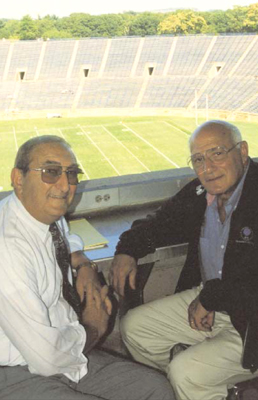

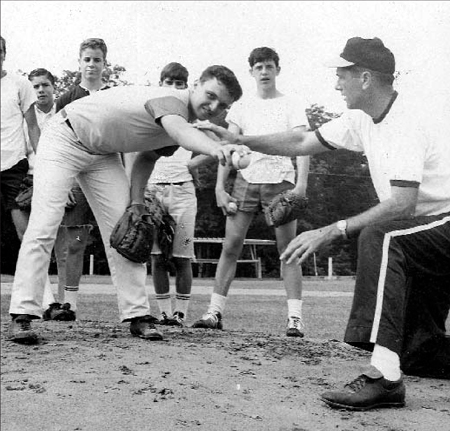
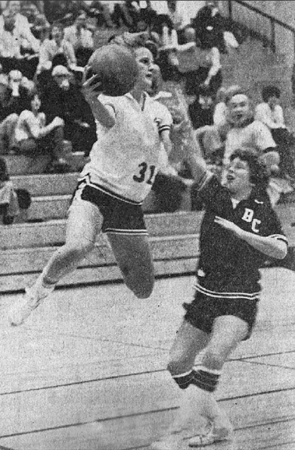

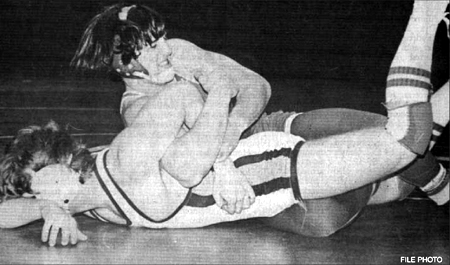
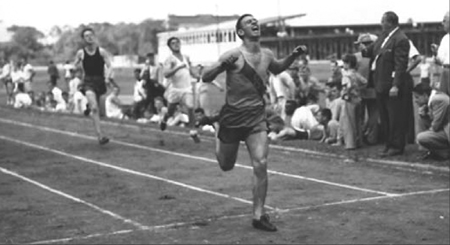
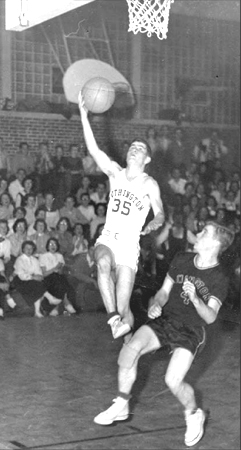
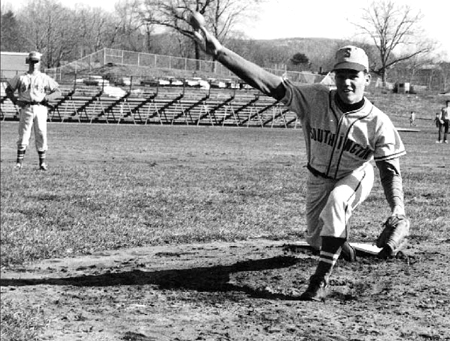


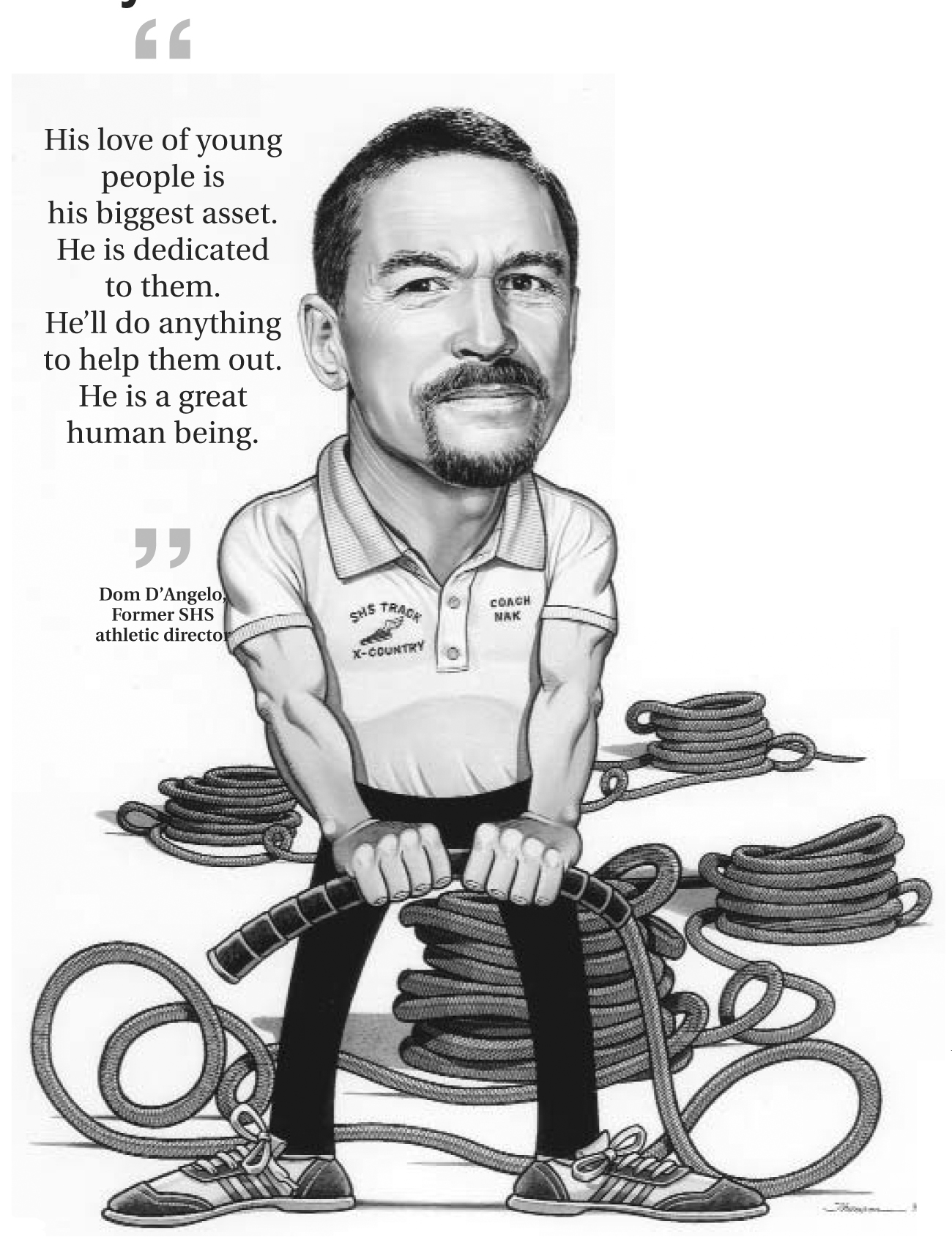
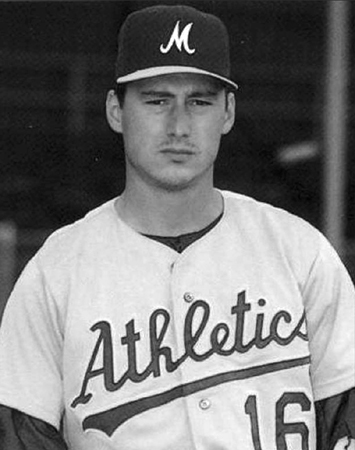

Southington shuffled players in and out of the lineup. They strangled teams at mid-court. They shifted from man-to-man defenses into a steel curtain zone as if they were flipping a switch. Turnovers led to fast break points, and Kelly Hart paced the attack with 552 points.
The team’s only blemish came in their fifth game of the season when a powerhouse Hamden team took advantage of Southington’s turnovers and poor shooting, but the Knights answered the call with 14 straight victories and a 19-1 regular season record. Southington cruised past three postseason opponents in the tournament, including a win over Hamden in the rematch that advanced the Knights to the final game.
Southington trailed by as many as 15 points in the final game. The Knights shot just 18 percent (3-for-33) in the first half, but Karen DeBishop capped a second half comeback with two lay-ups in the final minute. Southington rallied for the program’s first state title with a 44-43 victory over Westhill.
When he broke four records in a single meet, including a 100 yard dash time that was timed between .3 and .4 seconds of a world record. Forget about the fact that he paced the basketball team for three and a half seasons, including the program’s first undefeated regular season in 1953. His track stats were enough to enter him in any hall of fame.
“He was beyond his time in track. Nowadays, you have a lot of guys that are running the 100, but he just blew down that track,” said John Fontana, DePaolo’s teammate in the 50s. “You have to remember that, back then, we ran on a cinder track. I don’t know what he would have been able to run if he was running on the tracks of today. Who knows? He was so quick.”
 | ||||
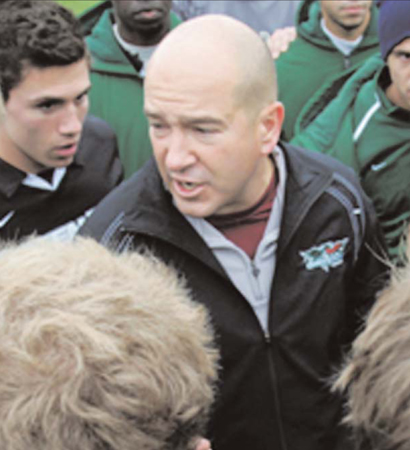
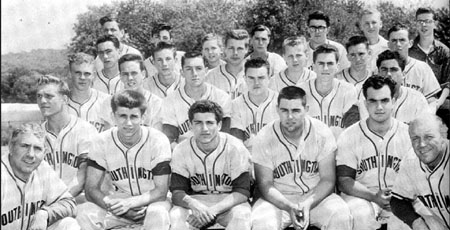
Blue Knight pitchers combined for 235 strikeouts with just 100 hits and 98 walks in the regular season, while Southington batters averaged .272 as a team with 190 hits, 44 extra base hits, four batters over .300, and eight batters with double-digit hits. When the dust finally settled, the Knights had earned the program’s first state title.
“When you define ‘team,’ that was the team. It really wasn’t just one individual—other than having a good pitching staff,” said Dick Tully, the team’s leading hitter and fourth pitcher. “We were pretty good defensively. We made plays, and we got a lot of timely hits. It was a different guy all the time. It was a team concept.”

Denorfia worked his way through the minor leagues until he was called up by the Cincinnati Reds in 2005. He has a career batting average of .275 through this season with 220 hits, 112 runs, and 74 RBI in six years in the majors. Every step along the way, Denorfia has been a crowd favorite for his superhuman efforts in the outfield and at the plate.
Nick Canepa, a San Diego sports writer, praised Denorfia in an article earlier this year. “If you don’t like Chris Denorfia, shame on you,” he said. “Then you don’t like real baseball, real apple pie, and real pasta. Every team should have a Chris Denorfia. Every team should have 25 players with Chris Denorfia’s attitude.”
We agree.
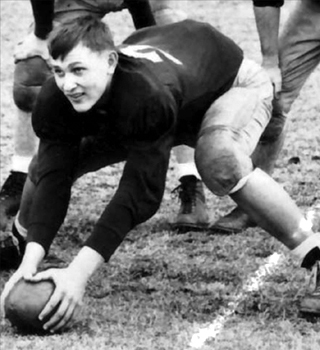

Click to enlarge photo
Click to enlarge photos
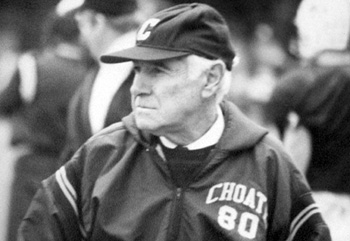
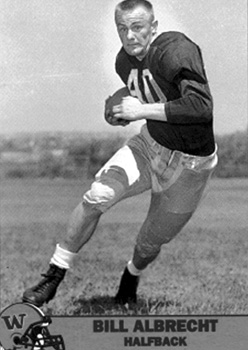
To nominate a team, player, booster, or media member, send a request along with supporting documentation to the nominations chairperson: Mike Boissonneault, 115 Panthorn Trail, Southington, CT 06489, (860) 628-5225, email – mikeboissy@cox.net
Bill Albrecht can still remember sitting across the desk from Southington High School’s principal, and begging
for a second chance. It was the late 1940s. Albrecht had just been kicked out of a trade school in Meriden, and
he had developed a reputation for playing hooky and being difficult. Principal Martin Phelan stared at the young man from behind his desk but finally relented. “He told me I wouldn’t make it anyway, but I set out
to prove him wrong,” said Albrecht. “From there, I had to tow the line, and I did. The best thing that every
happened to me was, when I was graduating, he came up to me and shook my hand. He congratulated me for
graduating, and that made my day.”
Bill Albrecht

